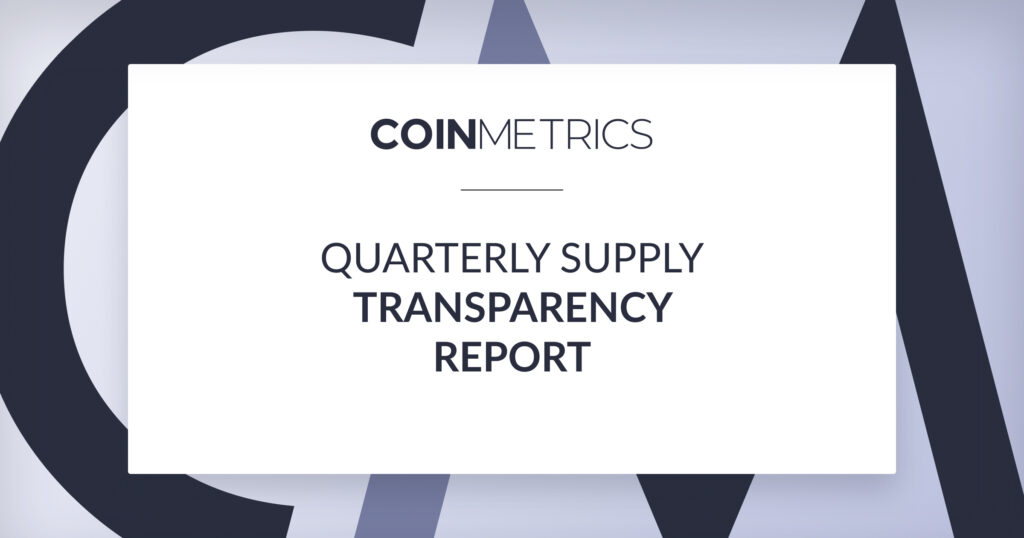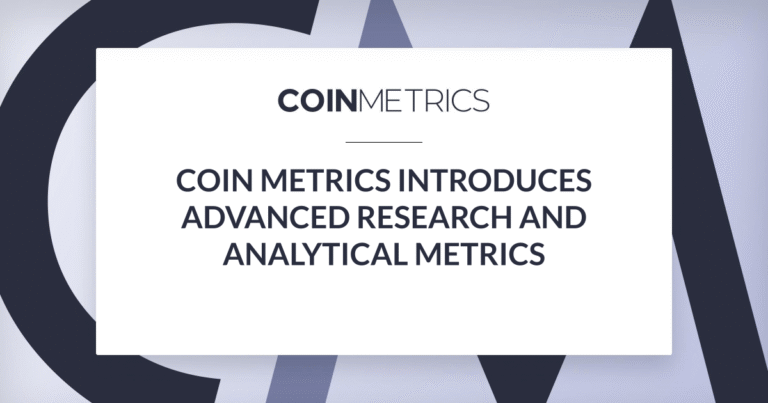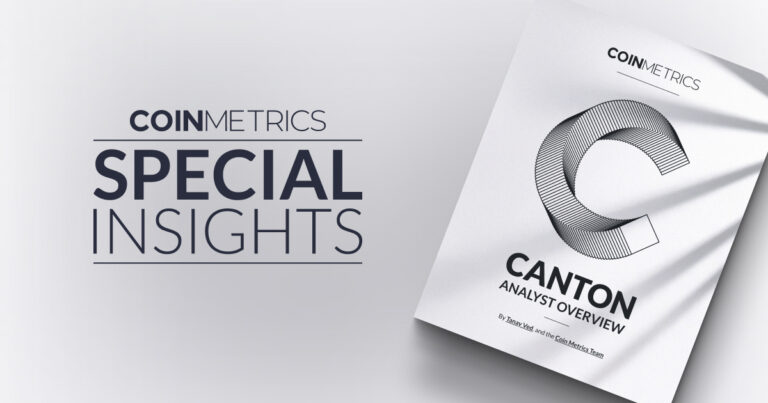The Coin Metrics Cryptoasset Supply Transparency Report brings visibility and insight into the actions of the key categories of a cryptoasset’s holders that are deemed to restrict supply from the market, as defined in the CMBI Float Adjustment Methodology.
The current universe of cryptoassets that are covered in this report is reflective of those that Coin Metrics administers Free Float Supply values for, which includes: 0x, Basic Attention Token, Bitcoin, Bitcoin Cash, Bitcoin Gold, Bitcoin SV, Cardano, Chainlink, Crypto.com Coin, DASH, Decred, Digibyte, Dogecoin, Ethereum, Ethereum Classic, FTX Token, Huobi Token, Litecoin, MakerDAO, NEO, Stellar, Tezos and XRP. Free Float Supply metrics are readily available through the Coin Metrics data visualization suite.
Note, for all of the monthly and quarterly U.S. Dollar values herein, an approximate aggregate quarterly value has been calculated by taking the net supply added or removed each day and multiplying it by that specific date’s Coin Metrics End of Day (00:00 UTC) Reference Rate.
The additional net value added to cryptoasset markets through Q2 2020 was $1.36B, most of which can be attributed to Crypto.com Coin ($392M), XRP ($268M), Ethereum ($256M) and Bitcoin ($245M).
The cryptoassets with the highest free float annual inflation rate over the last year were Crypto.com Coin (145%), Bitcoin SV (26%) and Decred (19%). Over the same period, Huobi Token (-23%), Dogecoin (-1.9%), Cardano (1.6%) and Bitcoin (2.6%) had the lowest annual inflation rate.
The net value of cryptoassets that moved outside of identified Foundation/Company controlled addresses was $743M during Q2 2020, down from $891M during the previous quarter ($148M less). However, it is worth highlighting that during Q1, $422M worth of Huobi Tokens were sent to a burn address by the Huobi Foundation. If lost/burned units were to be excluded from the calculation, the net value of cryptoassets that moved outside of identified Foundation/Company controlled addresses would have increased $274M between Q1 and Q2.
Note: Company/Foundation asset sales can be conducted for many reasons, including but not limited to operating expenses, team member/advisor vesting, strategic long term partnership/BD, scheduled and unscheduled token burns, strategic investments and treasury management. Companies/Foundations may also behave differently, either choosing to issue large volumes infrequently or issue on an as needs basis. Further, movement of assets from Foundation/Company controlled addresses does not necessarily mean assets have been sold (e.g. distribution to team members, burns, strategic placements, community incentive programs, etc).
Note 2: In November 2019, Stellar Foundation burned $4.14B worth of XLM
The net value of cryptoassets that moved outside of identified Company Team addresses was $9.4M during Q2 2020, down from $32.0M during the previous quarter ($23M less). However, during the Q2 there were $67M CRO deposited into Crypto.com Coin team addresses, without which the net value of cryptoassets that moved outside of Company Team controlled addresses would have been $76.5M.
Note: Movement out of Team controlled addresses does not necessarily mean assets have been sold, but rather can be an indication of activity (e.g. movement to passive yield generating tools such as Compound).
Quarterly Free Float Supply Summary


Cryptoasset specific supply commentary
0x (ZRX)
During the first half of 2020, Foundation and Team ZRX address transactions have been higher than historically observed values. During Q2 alone, Foundation addresses net supply decreased 39.8M ZRX and Team addresses net supply decreased 6.1M ZRX. The net impact of Foundation and Team ZRX transactions was an increase to the Free Float Supply of 45.9M ZRX, 35.8M more than was issued in the same quarter last year (Q2 2019).
Basic Attention Token (BAT)
Throughout Q2, the Basic Attention Token Free Float Supply increased 35.4M BAT, representing a third consecutive quarter of increased restricted supply net outflows.
This quarter’s increase in free float can largely be attributed to a relatively significant amount of activity relating to addresses that are owned by BAT team members. The final BAT tokens within the ‘BAT: Team Lockup’ address also vested this quarter, but at the time of writing, had not been transacted since. A large portion of team BAT transactions were sent to exchanges with Kyber and Binance being the two primary receivers of funds.
Net outflows from the BAT foundation wallet ‘BAT: UPG Reserve’ were 28.3M for the quarter, largely in line with previous quarter, the majority of which were sent to exchanges.
Bitcoin (BTC)
Throughout Q2, the Bitcoin Free Float Supply increased 18K to 14.32M. This represents a relatively small increase in Free Float Supply relative to previous quarters, largely due to the reduced issuance schedule that resulted from the Bitcoin halving, and the significant increase in restricted BTC belonging to long term holders.
Bitcoin owned by long term holders (>5 years) increased significantly through the quarter, with almost 103K BTC being added, a 300% increase from the previous quarter.
Bitcoin Cash (BCH)
Bitcoin Cash experienced a halving early in the quarter, on April 8, which reduced the issuance rate of BCH by approximately 50% during Q2. There were 88K new BCH issued in Q2 from mining, which was relatively low compared with the previous three quarter average of 164K BCH.
Further, only 38K BCH were activated for the first time ever since the Bitcoin/Bitcoin Cash fork in August 2017, down from an average of 145K per quarter over the previous three quarters.
Bitcoin Gold (BTG)
Bitcoin Gold Free Float increased 129K BTG throughout the quarter, significantly less than the prior two quarters which each saw ~400K BTG enter the market. This can be explained by a reduction in the issuance rate of BTG and a lower amount of BTG post fork activation. Bitcoin Gold also experienced a halving during Q2, resulting in only 97K BTG being mined, less than the previous three quarter average of 163K. The amount of BTG activated during Q2 for the first time since its fork was only 32K new units, significantly less than the previous three quarter average of 180K BTG.
Bitcoin SV (BSV)
Bitcoin SV experienced its halving shortly after Bitcoin Cash, and thus had a similar new issuance rate through the quarter, producing 89K new BSV from mining. However, similar to BCH and BTG, BSV experienced significantly less native units activated for the first time since the fork, with only 77K BSV newly activated and entering free float, down from 580K the previous quarter.
Cardano (ADA)
The Q2 2020 Cardano Free Float Supply increase of 61.1M ADA was the smallest quarterly increase since Q3 2018. The majority of the float increase can be attributed to net outflows of ADA from Foundation identified addresses, which totaled 62.2M ADA in Q2. Throughout the quarter, almost 100K ADA worth of transaction fees were burned, a significant increase from the prior three quarterly average of 39K ADA.
Chainlink (LINK)
Chainlink’s Free Float Supply increased 3.0M throughout the quarter, the total amount of which can be attributed to the movement of LINK in Foundation Team addresses. This amount of LINK represents an increase from the two prior quarters, where team members only moved 1.0M (Q1 2020) and 0.5M (Q4 2019). A large portion of the 3M assets that entered the Free Float Supply this quarter ended up in Binance addresses.
Crypto.com Coin (CRO)
During Q2 2020, the Free Float Supply of CRO increased 5.9B, a significant increase from the previous three quarters which in total saw Free Float increase only 2.4B. During the quarter, 1.2B CRO was sent from foundation controlled addresses to team controlled addresses (where it has not moved since), and another 5.9B CRO was sent from Foundation controlled addresses to Huobi, Bittrex and OKEx.
DASH (DASH)
DASH’s issuance rate adjusts every 210,240 blocks (~1 year), and did so during Q2, decreasing from ~6.6% to ~6.0% at the end of April. This led to the new supply from mining falling to 162K for the quarter, down 10K from the quarterly average over the last year. Restricted supply held by strategic long term holders of DASH increased another 20K in Q2, largely in line with previous quarter increases.
Decred (DCR)
Another 396K DCR was added to the Free Float Supply through Q2 2020, with 390K coming from newly mined DCR and the other 6K resulting from a net outflow of DCR from foundation wallets. Both of these values were largely in line with previous quarters.
Unlike the previous two quarters, identified Decred team member’s addresses did not have any deposit or withdrawals during the quarter.
Digibyte (DGB)
The Free Float Supply of Digibyte increased just under 155M DGB in Q2. Digibyte’s continuous deflation schedule continues to mean that fewer DGB are mined each quarter, with 312M mined in Q2, down from 358M in Q2 of 2019. However, DGB held in addresses that have been inactive for over 5 years increased this quarter, restricting Free Float Supply by 158M DGB.
Dogecoin (DOGE)
The Free Float Supply of Dogecoin increased just over 1.0B in Q2, largely resulting from the 1.25B DOGE that was mined during the quarter. DOGE in addresses that have remained inactive for over 5 years, and thus became restricted from the market and Free Float Supply, increased a further 217m through the quarter.
Ethereum (ETH)
Ethereum Free Float Supply has consistently increased ~1.2M for each of the last 5 quarters (i.e. since the block subsidy adjustment from 3ETH to 2 ETH). This is almost solely attributable to the newly mined supply that is introduced every block, with 1.24M ETH mined during Q2. Further, the Ethereum Foundation issued 11K ETH through the quarter, resulting in a total increase to free float of 1.25M for Q2.
During Q3, Ethereum will turn 5 years old, which will for the first time result in the identification of any long term holders that have not transacted since the genesis block or shortly after, potentially impacting Ethereum’s Free Float Supply more than previously experienced.
Ethereum Classic (ETC)
Ethereum Classic underwent an upgrade which saw the block subsidy decrease 20% from 4 ETC to 3.2 ETC per block during March. For the first time, this new inflation schedule was evident through a whole quarter’s figures, resulting in the new supply from mining falling from a quarterly average of 2.3M to 1.9M. Further increasing the Free Float Supply, 61K ETC that had not moved since the Ethereum/Ethereum Classic fork became active during Q2.
FTX Token (FTT)
FTX continued to conduct weekly FTT off-chain burns, removing FTT tokens from the ledger. Throughout Q2, burns totaled just under 1.5M, bringing the total almost of burned FTT since Genesis to almost 5.0M. During Q2, FTX Company identified addresses sent 5.0M FTT to the FTX Exchange, a significant reduction from the previous 3 quarter average of ~20M.
Together, Company identified address activity (+5.0M) and burns (-1.5M) resulted in a net increase in free float of 3.5M for Q2 2020.
Huobi Token (HT)
Huobi Token’s Free Float Supply reduced by 8.7M during Q2 2020. Of this, Huobi Global sent 11.5M HT from exchange addresses to the 0x0000000000000000000000000000000000000000 burn address during Q2, rendering those tokens lost and unspendable. This rate of token on-chain burn is in line with previous quarters, excluding the one off Q1 2020 burn of 147M HT from the Platform Operations and the Investor Protection Fund. Huobi Global added 2.9M HT into Free Float Supply during Q2 through transacting funds out of Company identified addresses.
Litecoin (LTC)
Litecoin’s quarterly Free Float Supply increase was the lowest in the past year, rising only 400K LTC throughout Q2. Whilst the newly mined supply was in line with previous quarters (668k), there was a significant increase in the number of LTC that were held in wallets that aged 5 years without having demonstrated activity. The 268K LTC added to the long term holder category (i.e. restricted from Free Float Supply), was over twice as much as the previous three quarter average of 125K LTC.
MakerDAO (MKR)
The Free Float Supply of MKR fell by 22.6K through Q2 2020, in large due to the increased participation in the ‘Maker: Governance Contract’ which experienced a net increase of 36.6K MKR. Holders of MKR that participate in the network’s governance do so actively by staking native units in the contract without any direct financial incentive to do so, and are thus considered to restrict supply from markets.
Transactions from MakerDAO Foundation controlled addresses resulted in a net outflow for the quarter of 14.4K MKR. 392 MKR was burned and removed from current supply during Q2, representing a significant change from the 6K that was minted during Q1 after the March flash crash resulted in mass liquidations.
NEO (NEO)
The NEO Free Float Supply increased 462K in Q2 2020 which can be solely attributed to the movement of NEO out of foundation owned addresses. This rate of Foundation wallet movement is in line with the previous three quarter average of 417K NEO.
Stellar Lumens (XLM)
Stellar Lumen Free Float Supply increased 195.5M XLM through Q2 2020, almost entirely the result of movement of XLM from foundation controlled addresses to more liquid addresses, including large amounts transferred to Coinbase and Kraken.
Tezos (XTZ)
The Tezos Current Supply increased 15.1M through Q2 as a result of the Baking process. Of this, 3.8M was baked by Tezos Foundation addresses, resulting in an 11.4M increase to the Free Float Supply throughout the quarter.
XRP (XRP)
The XRP Free Float Supply increased 1.35B through Q2 2020, slightly more than the 1.12B that entered Free Float Supply in the previous quarter. The largest provider of extra liquidity to the market during the quarter was the Ripple Foundation, which issued 1.1B tokens from Foundation identified controlled addresses. There was also an increase this quarter in the amount of XRP that left addresses controlled by Founding Team members, up to 307M XRP from the prior three quarter average of 164M. There were also 51M XRP that were in addresses that became categorized as long term holders after having not displayed activity in over 5 years.
Detailed Free Float Supply Information




ABOUT COIN METRICS
Coin Metrics is a leading provider of transparent and actionable cryptoasset market and network data. Coin Metrics delivers mature data across multiple formats to various industry stakeholders, including financial enterprises, funds, media and research outlets, and data/application providers. Coin Metrics’ data empowers its clients and the public to better understand, value, use, and ultimately steward public crypto networks. Further Coin Metrics research can be found here.
ABOUT CMBI
Coin Metrics launched CMBI to bring independent and transparent index solutions to the cryptoasset investment community. In the nascent and often complex cryptoasset market, CMBI Indexes strive to be dynamic and adjust to the rapidly changing market conditions to design and maintain investable products. CMBI Indexes provide markets and customers with industry-leading solutions that aid in performance benchmarking and asset allocation.



